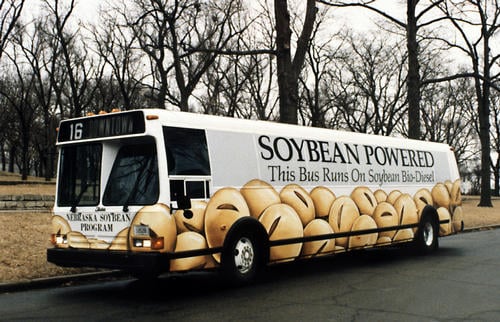In many communities contemplating improving local transit service, for them the mode choice is clear: Bus rapid transit or BRT. I have heard BRT described as “light rail transit on the cheap.”
Any of these communities would do well to look to Ottawa, Ontario, Canada. BRT there was so well patronized – too well patronized in fact, that the city is in the midst of going through the process of replacing the service with LRT (light rail transit). Reality check: With respect to rider demand, BRT there can’t keep up.
Did community leaders not see this coming? Apparently, they did not. Otherwise, why even go the BRT route at all, right?
The logistics involved in transitioning from Ottawa BRT to Ottawa LRT has been nothing short of complex, with line work still ongoing and with modified BRT service currently being in effect. Known as the Confederation Line, the LRT was first authorized in 2012. LRT service, meanwhile, is expected to get underway this September.
Could this set a precedent?
How we get around
It’s an age-old question of how, point-to-point, people should move. It’s all about transportation balance and finding the proper balance of modes can be tricky.
The Department for Transport in England conducted a survey. From this survey the DfT determined that the number of ground transportation trips per person made by transit in 2017 was 99 or 10.15 percent of all per-person trips. Meanwhile, the number of per-person trips in autos in 2017 totaled 594, accounting for 60.92 percent of all per-person trips made.1
In the world, in the meantime, the highest transit usage can be found in Hong Kong, at almost 75 percent. Contrast that with the U.S. which weighs in at below two percent.2
Whereas Hong Kongers are heavily dependent on transit and the U.S. is far, far less so, in Britain there appears to be much better mixing of modes.
The mobility and dirty-air intersection
Interestingly, all three locales have problems with polluted air. That which is sourced from motor vehicle tailpipes, can be easily remedied through technology, less driving and regulation and/or incentivization as well as through the implementation of strategies or techniques like congestion pricing and traffic calming. What this all comes down to is efficiency: Getting the greatest use and receiving the greatest benefit from optimization of what is already out there.
Okay, now back to BRT.
The great BRT/LRT debate
There are those who swear that between BRT and LRT, the former is the better value. Because it’s less expensive to construct, right?
Compared to LRT, BRT is more versatile, has greater flexibility, routes can be changed relatively easily and, in probably most cases, BRT is quicker to install. But, that could be where the advantages of BRT over LRT stop.
With BRT, buses in many cases run in mixed traffic. This can have a direct countervailing effect in terms of bus time schedules being met.
Being that buses cannot accommodate the same number of passengers that light rail transit trains can (one bus can hold only as many as probably a third that of the train at best and a sixth at worst), requirements may dictate the need for more buses and that necessitates the need for more bus drivers.
Though stops and stations can encourage development around such, there is greater potential for transit-oriented development (TOD) around train stations than there is around bus stops.
And, as to the matter of BRT-produced emissions versus that sourced from LRT, unless BRT buses are electric and/or LRT trains are diesel-powered, LRT more often than not, is the clear winner. LRT is typically the better of the two at reducing transportation emissions.
And, finally, where maintenance of equipment is concerned, whereas BRT may be simpler to maintain, LRT is typically longer-lasting and that makes a difference in terms of train lastibility.
The overarching sentiment seems to be that the more light-rail-transit-like bus rapid transit can be; for example, in ride quality, in staying on schedule, in aesthetics or appeal, the more likely ensured is the latter’s success. Oh, and for the record, according to one accounting, the preference in the late 1980s was greater for rail than it was for bus transit. (See: Edson L. Tennyson, Transit Ridership – Rail vs. Bus: Impact on Transit Patronage of Cessation or Inauguration of Rail Service, “Conclusions,” 1989, here).
Notes
- Department for Transport, National Travel Survey, “Table NTS0308: Average number of trips by trip length and main mode: England, 2017”
- Jeff Speck, Walkable City: How Downtown Can Save America, One Step at a Time, “Step 4: Let Transit Work – Where America Sits,” 2012, p. 141
This post was last revised on Jun. 13, 2020 @ 5:20 p.m. Pacific Daylight Time.
– Alan Kandel

You may want to look at my article on BRT in Dissent: https://www.dissentmagazine.org/article/brt-bus-rapid-transit-big-philanthropy-oil-lobby
Great article! Thank you Ben for bringing this to Air Quality Matters’ readers’ and my attention. Very much appreciated!